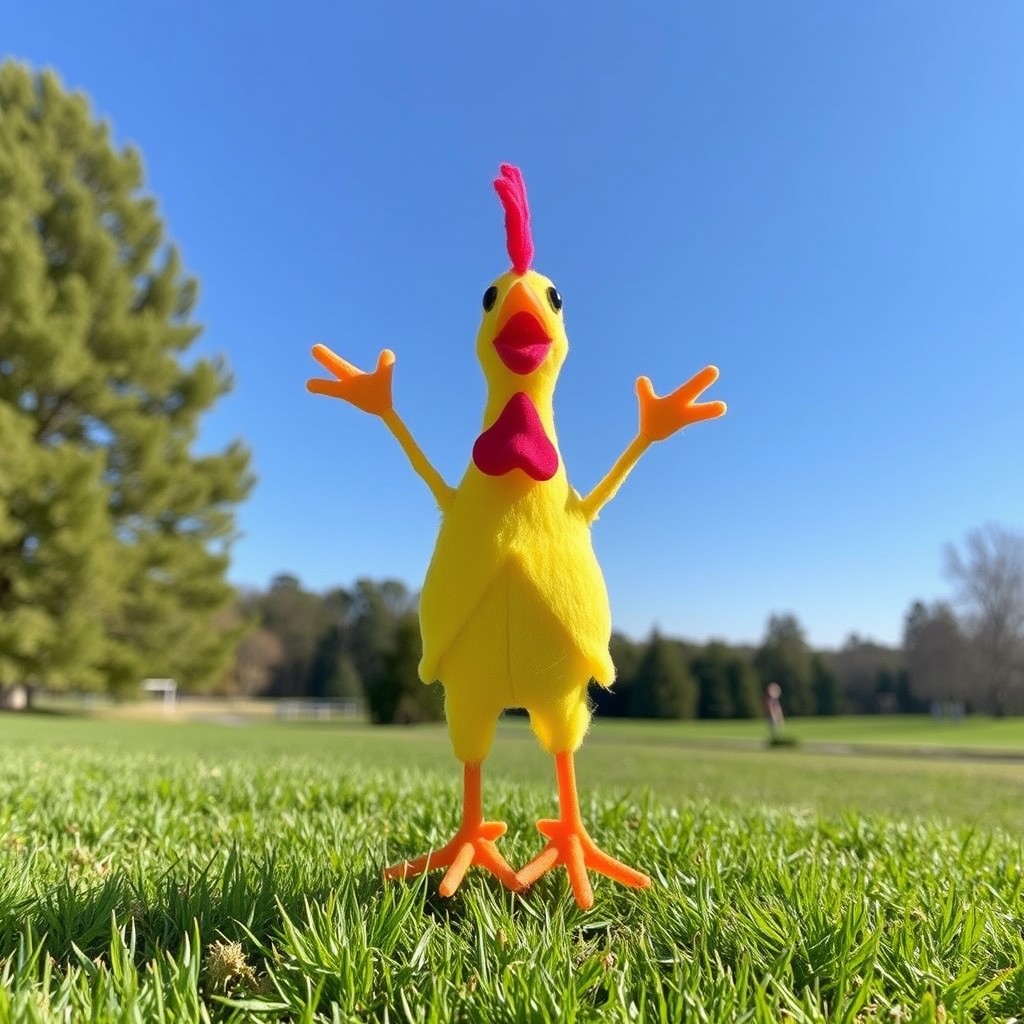Yellow “Jumping” Wind-Up Chicken — Expert Review
A practical look at movement quality, build, historical context and what matters most to collectors and educators.

Quick specifications
- Type: Wind-up mechanical toy
- Materials: Plush shell, tin/steel movement
- Size: ~15 cm height
- Motion: Walking + bounce hop
- Era: Mid-20th century lineage
- Typical grade: Collector-level vintage
Expert rating
Performance & build
Mechanical performance
The mainspring delivers smooth torque and a steady cadence via a simple governor. Well-kept examples run ~2–3 minutes per wind with a pleasing, low click — more charm than noise.
Movement character
Cam-driven gait creates a gentle hop/peck cycle. Feet land confidently, and the bounce reads “alive” rather than jittery — a sign of good alignment and healthy spring temper.
Construction notes
- • Plush retains colour if UV-protected
- • Stitched seams and period fasteners
- • Die-stamped plates, serviceable screws
- • Robust spring barrel and cam train
Collector signals
- • Original finish & trims present
- • Smooth wind; no binding
- • Maker marks consistent with era
- • Box/leaflet increase desirability
Where it sits in history
Golden-age lineage
The mid-century shift from all-tin to plush-over-movement brought warmth and character. The jumping chicken inherits refined cams and reliable springs from inter-war tinplate workshops.
Built to be kept
Hand assembly with standard screws means maintainable mechanics — a major reason fine survivors still run beautifully today.
Collector insight
- Rarity: Common lineage; top-condition pieces are scarcer.
- Value range: condition-dependent; completeness & paperwork add.
- Best targets: clean plush, tidy stitching, confident run.
How it compares
Jumping Chicken
- • Lifelike hop/peck rhythm
- • Plush adds charm & display warmth
- • Consistent, serviceable movement
- • Strong cross-audience appeal
Other wind-up animals
- • Motions vary (waddle, roll, peck)
- • Tin-only shells feel colder on display
- • Reliability depends on maker & era
- • Niche desirability by species/theme
The yellow jumper stands out by balancing friendly looks with sturdy, repeatable mechanics — a sweet spot for both play and display.
Care & maintenance
Essentials
Wind gently every few months; never force the key. Keep plush dry and dusted; avoid solvents. Store at 40–60% RH, away from UV.
Common issues
Spring fatigue shortens run time; grit adds friction. Both call for professional service — avoid DIY oils that attract dust.
Maintenance checklist
- • Light, complete run occasionally
- • Dust with soft brush; no soaking
- • Stable climate; no attics/cellars
- • Inspect seams & fasteners
- • Seek expert help for binding
Educational value
Mechanics you can see
Energy storage, gearing, damping and cam profiles — a hands-on lesson that kids (and adults) instantly grasp.
History in your hand
Mid-century materials and assembly choices spark conversations about durability, repair, and design.
Learning objectives
- • Stored energy → motion
- • How cams choreograph gait
- • Material choices & longevity
- • Conservation vs restoration
Expert recommendations
For collectors
Prioritise originality (plush, fasteners, finish) and confident run. Documentation and packaging lift value; avoid heavy refinishes.
For educators
Use brief wind cycles and clear lighting; pair the toy with a simple diagram of spring → cam → gait for quick classroom demos.
Our verdict
A standout blend of charm and engineering. Highly recommended as an entry piece for new collectors and as a teaching tool for hands-on mechanics.
Need expert advice on your piece?
Send photos for authenticity notes, value context, and safe care plans.
